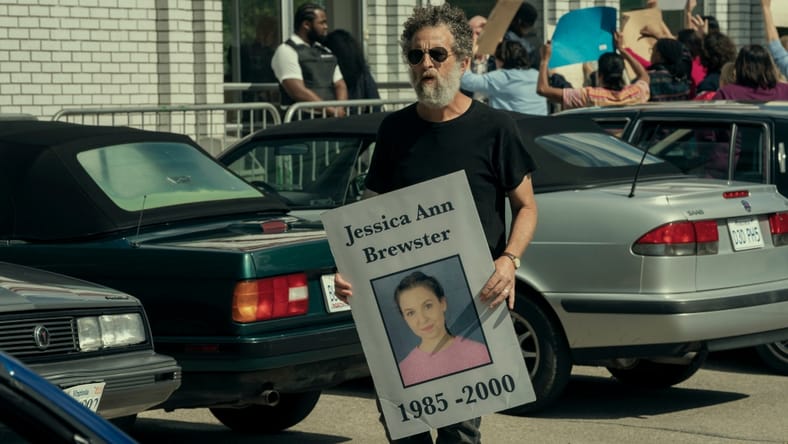
For legal reasons, the beginning of each episode of Netflix’s Painkiller limited series has to make viewers aware that characters and plot points have been fictionalized. That’s to protect the show against defamation lawsuits from the Sackler family who once owned Purdue Pharma and other real people whose names are used in a less-than-flattering light regarding the opioid crisis.
But Painkiller executive producer Eric Newman told MovieMaker that he and the show’s director, Peter Berg, didn’t want to let the Sacklers off the hook that easily. So they came up with a way to double down on the truth about Oxycontin: it has claimed the lives of thousands and thousands of real overdose victims.
Painkiller Spotlights the Truth Behind Oxycontin Crisis
“We struggled a bit when it came time to add the disclaimer onto the front of the show, which is standard legal that protects us from someone feeling we defamed them. Because the truth is, you can’t know what someone was actually thinking. In many cases, conversations that took place that we weren’t privy to, we can’t know what was said. Also, you sometimes need to create composite characters,” Newman tells MovieMaker.
“Me and Pete [Berg], what we really struggled with was letting them [the Sacklers] off the hook with a disclaimer when you’re telling a story that is true and the subject is a master at obfuscation and avoidance. The last thing you want to do is deliver them the opening and closing argument in their defense, which is ‘this is all bulls—,'” he adds. “Pete Berg came up with the idea of filming the loved ones of OxyContin overdose victims.”
The beginning of each of the six episodes of Painkiller briefly introduces a family member of a real Oxycontin overdose victim, who tells the audience what they miss about their loved one and the impact that loss has had on them and their family.
Newman personally went to the homes of all six families featured in the episodes.
“It was a very hard thing to do, to sit for, and I had to go to each of these homes… sadly, it was not hard [to find them]. They’re everywhere,” he says. “I continue to be surprised by the breadth of this tragedy — that these people all were basically a stone’s throw from one another and never knew each other. It’s that prevalent, these opioid overdoses and deaths of young people. The goal of those disclaimers is to remind people that this happened, this is real.”
Also Read: Where Is the Real Richard Sackler From Painkiller Now?
Interestingly, he also realized that each of the family members had something in common — they were no longer seething with anger at the Sacklers and Purdue.
“They’d moved past a certain rage and into a much deeper, higher call, which is to help spread this word, to give people the information that they didn’t have when a doctor 10, 15 years ago put their child on Oxycontin, and it was the beginning of a tragedy for them,” Newman says. “The opportunity to get this story and the truth in front of more people and potentially save lives becomes, I think, the best way for them to honor their children.”
Newman was also the executive producer behind another popular Netflix series about a very different type of drug crisis: Narcos and Narcos: Mexico, which follows the drug cartels of Colombia and Mexico who supplied the U.S. with cocaine in the 1980s.
When Newman read Barry Meier’s book, Pain Killer, which the series is based on along with Patrick Radden Keefe’s Empire of Pain, he realized the Sacklers reminded him of the drug cartel characters he’d gotten to know so well through Narcos. And not in a good way.
“This unprecedented betrayal of public trust actually compared unfavorably to the drug traffickers that I had been chronicling for a number of years,” Newman said. “Those traffickers don’t pretend to be anything but drug traffickers. They’re honest about their criminality. The perpetrators of the opioid epidemic were not,” Newman says.
“When you combine marketing with something as dangerous as opioids, your goal is to minimize the deficiencies and the risks and the side effects. And when the deficiencies, risks, and side effects are death, you’re really in a conflict of interest, particularly as a health care provider of any kind.”
All six episodes of Painkiller are now streaming on Netflix.
Main Image: John Ales as Dr. Gregory Fitzgibbons in episode 104 of Painkiller. Cr. Keri Anderson/Netflix.
Share:

